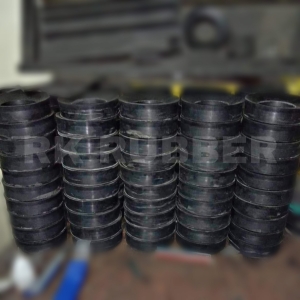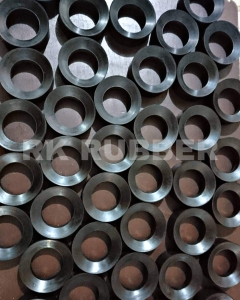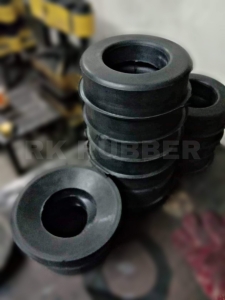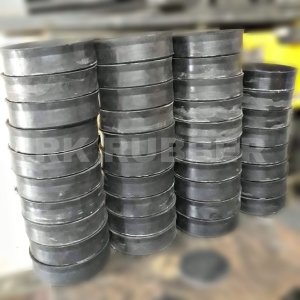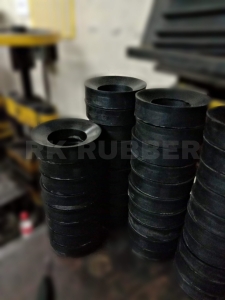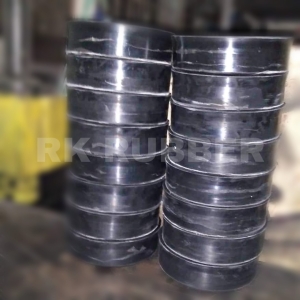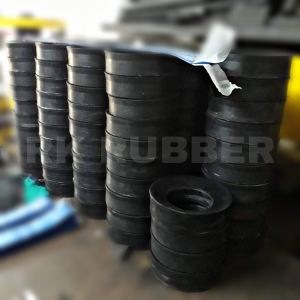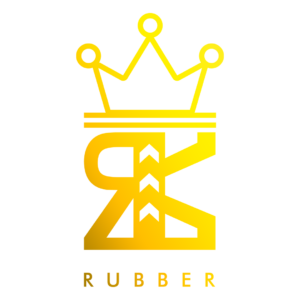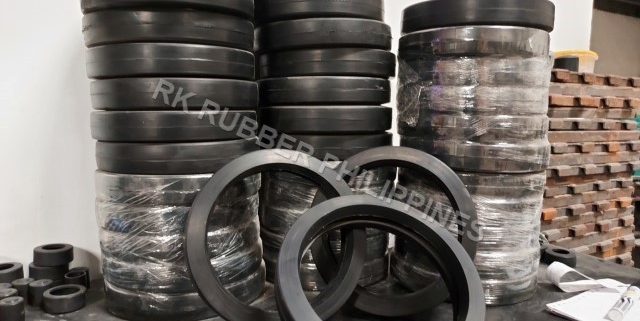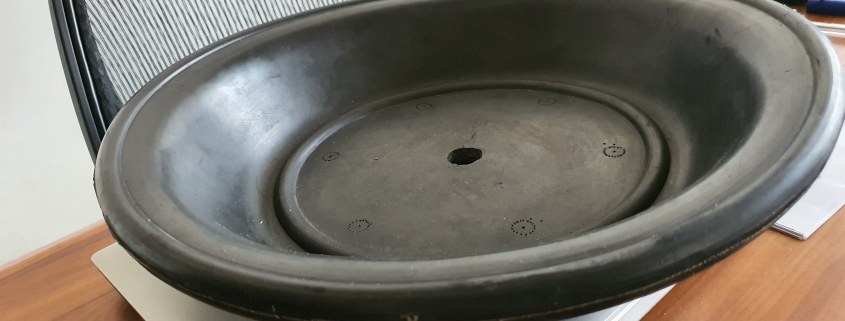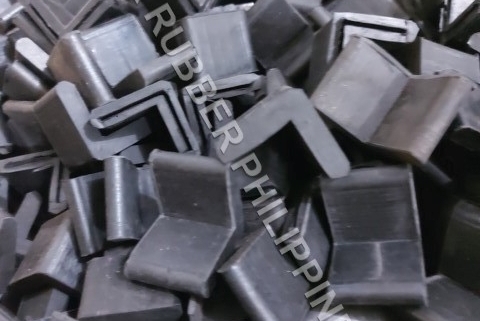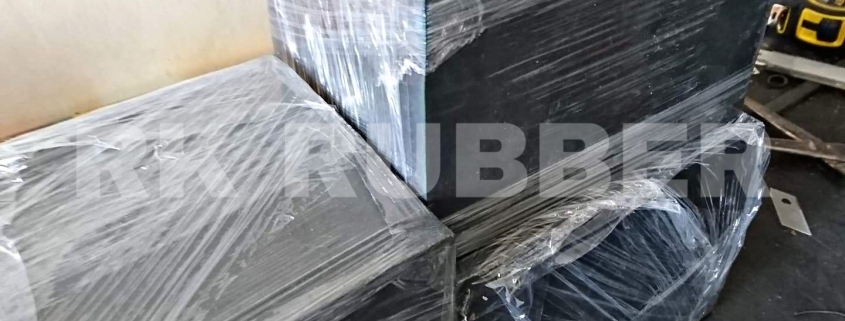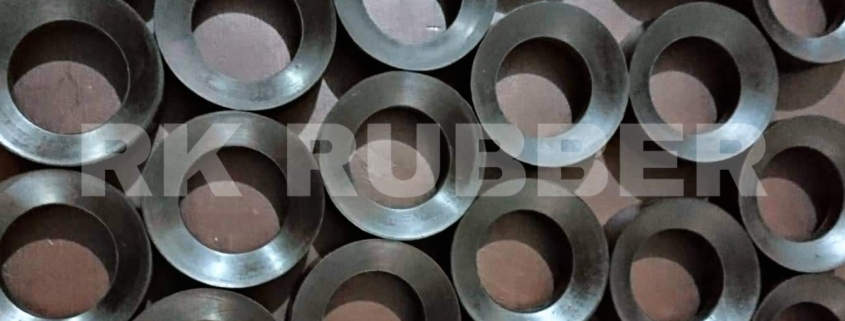Rubber Footing
in Rubber ProductRubber Footing Types & Applications
Rubber footings come in various types and are utilized in various applications across commercial, industrial, automotive, aerospace, pharmaceutical, and residential sectors. Different applications require specific rubber compounds tailored to their needs. Installation methods vary, including push-in footings, threaded, unthreaded footings, magnetic rubber footings, adhesive footings, and tack footings. Customized solutions are available based on industry standards to meet diverse requirements efficiently. Adhesive footings offer stability in construction projects, while push-in footings are easy to install and prevent equipment from damaging floors. Magnetic rubber footings provide both strength and flexibility, which is ideal for stabilizing structures and equipment. Tack footings are suitable for fiberboard, wood, and plastic equipment, offering easy installation using a hammer. Threaded and unthreaded footings absorb shock and prevent ground damage for heavy equipment. By adhering to industry standards, rubber footings deliver reliable performance across a broad spectrum of applications.
Advantages of Using Rubber Footings
When considering the utilization of rubber footings in various applications, one can benefit from their ability to protect equipment, absorb vibration, and reduce noise levels. Rubber footing benefits include:
- Creating a seal between machinery and its resting surface.
- Preventing vibration and noise.
- Safeguarding equipment from wear and tear.
These footings are commonly used in manufacturing processes to maintain machinery’s longevity and efficiency. The technology behind rubber footings focuses on materials like SBR, natural rubber, synthetic rubber, EPDM, and silicone, which are known for their vibration absorption, noise reduction, and friction resistance properties. Installation of rubber footings is straightforward, with options ranging from adhesive footings to threaded and unthreaded footings catering to various equipment needs. Overall, the advantages of rubber footings lie in their protective capabilities, enhancing equipment stability and ensuring a quieter operational environment across different industrial and residential settings.
Importance of Rubber Footings in Manufacturing
Playing an important role in manufacturing processes, rubber footings are essential components contributing to equipment stability and operational efficiency. Rubber footing benefits include vibration reduction, preventing sliding, and protecting floors from damage. These solutions come in various forms, such as threaded, unthreaded, adhesive, tack, magnetic, and push-in footings, each offering specific advantages tailored to different applications. The technology behind rubber footings allows for customization based on client specifications, ensuring ideal performance and fit for diverse equipment types. In manufacturing, rubber footings are vital for absorbing shock and vibration and safeguarding heavy machinery and delicate instruments. Their applications include creating seals between machinery and surfaces, reducing noise levels, and enhancing equipment longevity. With rubber footings’ versatility and protective capabilities, industries can optimize their operations and maintain a safe working environment.
Key Materials Used in Rubber Footing Production
Key materials utilized in the production of rubber footings play an essential role in determining the product’s durability and performance in various industrial applications. Rubber compounds are the primary materials used in rubber footings, with variations like SBR, natural, synthetic, EPDM, and silicone being common choices. These compounds are selected based on specific application requirements to guarantee excellent functionality. Innovative designs and production techniques are employed to enhance the performance of rubber footings, meeting industry standards and market trends. Manufacturers prioritize sustainability and consider the environmental impact of the materials used in production to promote eco-friendly practices. By incorporating high-quality rubber compounds and adhering to industry standards, rubber footing manufacturers aim to deliver products that offer superior durability, functionality, and performance in diverse industrial settings.
Manufacturing Process of Rubber Footings
The manufacturing process of rubber footings commences with the collection of natural rubber latex from rubber trees. This latex is processed and mixed with various additives to achieve the desired consistency and properties for the rubber footing. The mixture is then poured into molds and heated until it solidifies. Once cured, the rubber footing is removed from the mold and undergoes trimming and polishing to create a smooth, finished surface.
Rubber footing benefits include vibration absorption, noise reduction, friction resistance, and property protection. Installation of rubber footings is relatively straightforward, and their properties make them suitable for various applications. Maintenance typically involves regular cleaning and inspection to ensure peak performance. Ongoing innovation in rubber footing technology continues to improve its effectiveness in different industries.
Customized Rubber Footings for Various Industries
Customized Rubber Footings caters to diverse industries, offering tailored solutions to meet specific equipment and application requirements. The innovative solutions provided by RK Rubber Enterprise Co. cater to various industries, including:
- Industrial applications
- Automotive requirements
- Residential customization
- Aerospace advancements
- Tailored solutions for specific equipment needs
RK Rubber Enterprise Co. specializes in creating rubber footings that address the unique demands of different sectors. From industrial machinery to residential appliances, the company’s expertise guarantees that each footing meets the specific requirements of the industry it serves. By offering customized rubber footings, RK Rubber Enterprise Co. plays a significant role in enhancing the performance and longevity of equipment across a wide range of sectors.
Contact RK Rubber Enterprise Co. for Rubber Footing Solutions
For inquiries regarding rubber footing solutions, please reach out to RK Rubber Enterprise Co. They offer customized solutions for enhanced stability through advanced installation techniques. RK Rubber’s rubber footings are designed to provide superior noise reduction and efficient vibration absorption. Whether for commercial, industrial, automotive, aerospace, pharmaceutical, or residential applications, their range of materials, including SBR, natural, synthetic, EPDM, and silicone, can cater to diverse needs. The black color variant can be adjusted based on specific client requirements, ensuring a perfect fit. By establishing a seal between machinery and surfaces, these rubber footings protect against wear and tear while reducing noise levels and friction resistance. Contact RK Rubber Enterprise Co. today to explore how their high-quality rubber footing solutions can benefit your equipment and facilities.
Frequently Asked Questions
Can Rubber Footings Be Customized for Specific Industrial Applications?
Customized rubber footings can be tailored for specific industrial applications, utilizing diverse materials like SBR, EPDM, and silicone. These designs offer noise reduction, equipment protection, and unique properties like magnetic features. Production techniques involve molding and curing processes.
How Do Rubber Footings Help Reduce Noise Levels in Manufacturing?
Rubber footings in manufacturing reduce noise levels by absorbing vibrations, preventing sound transfer. Their installation process is straightforward, enhancing their effectiveness. Successful case studies demonstrate the benefits of noise reduction with rubber footings, and regular maintenance guarantees long-term use.
Are There Different Types of Materials Used in Rubber Footing Production?
Rubber compounds vary in rubber footing production and are tailored to specific needs. The vulcanization process enhances durability. Anti-slip properties prevent sliding. Weather resistance guarantees longevity. Impact absorption shields equipment. Diverse materials like SBR, natural, synthetic, EPDM, and silicone are utilized for peak performance.
What Makes Magnetic Rubber Footings Unique Compared to Other Types?
Magnetic rubber footings offer unique benefits compared to other types due to their magnetic attraction, enhancing stability and versatility. They provide temperature resistance, durability, anti-vibration properties, easy installation, impact absorption, and cost-effectiveness, making them a preferred choice for various applications.
How Can Rubber Footings Protect Equipment in Residential Settings?
Rubber footings provide peak impact protection by absorbing vibrations, enhancing equipment longevity in residential settings. They offer slip resistance, easy installation, and reduced noise levels. These qualities safeguard appliances and furniture from damage, ensuring top-notch performance.
Conclusion
To sum up, RK Rubber Enterprise Co. in the Philippines is a leading manufacturer of high-quality rubber footings for various industries. With a commitment to durability and reliability, they offer innovative solutions that effectively absorb vibration, reduce noise levels, and enhance friction resistance. By utilizing top-grade materials and customizing products for specific needs, RK Rubber sets the standard for excellence in rubber footing production. Contact them today to learn your rubber footing requirements.
Rubber Piston Ring
in Rubber ProductRK Rubber Enterprise Co. is a reputable rubber piston ring seal manufacturer in the Philippines, specializing in providing high-quality rubber piston rings for various industries. Our customized rubber products are made from premium-grade materials and adhere to global quality standards, ensuring durability and reliability. With a wide range of materials and variants available, we offer tailored solutions to meet specific project requirements. Trust in our expertise in the manufacturing process to deliver durable and wear-resistant rubber piston rings that enhance engine performance and longevity. Contact us today to learn more about the benefits of partnering with a trusted manufacturer.
Key Takeaways
- Rubber piston rings are used to fill the gap between the piston and cylinder wall in machinery to ensure efficient operation and prevent damage to the engine.
- The friction caused by piston rings accounts for approximately 33% of the total resistance of the machine.
- The size and configuration of piston rings may vary depending on the machinery or engine size, and it is important to have the right size to prevent gas leakage and ensure optimal fuel consumption.
- Rubber piston rings are manufactured using methods such as extrusion, compression molding, and injection molding, and they offer benefits such as durability and resistance to wear and tear.
Benefits of Rubber Piston Ring Seals
Rubber piston ring seals offer numerous advantages in various industries and applications. These seals provide performance advantages by ensuring a tight seal between the piston and cylinder, preventing leakage of gas and oil. This not only enhances engine efficiency but also prevents damage to the engine by reducing friction and wear. The longevity benefits of rubber piston ring seals are evident in their durability and resistance to wear and tear compared to metal rings. This translates to longer-lasting seals that require less frequent replacement, resulting in cost-effectiveness when compared to alternative options.
Rubber piston ring seals are highly effective in preventing engine damage by minimizing thermal throttle and maintaining proper engine temperature. They are crucial in releasing heat from the cylinder, preventing overheating and potential engine failure. Additionally, these seals contribute to enhanced engine efficiency by reducing friction, which accounts for a significant portion of the total resistance in a machine. With a suitable piston ring, friction is minimized, leading to improved performance and increased engine lifespan.
Importance of Choosing the Right Size
How crucial is it to select the appropriate size for a piston ring seal? The size of a piston ring seal plays a vital role in engine performance and efficiency. Choosing the right size is essential to ensure optimal sealing, minimize friction, and prevent common piston ring problems. When the piston ring is too small, it can result in gas leakage, leading to high fuel consumption and pollution. On the other hand, if the piston ring is too large, it can cause excessive friction and damage to the engine.
Using rubber piston rings offers several advantages. Rubber rings provide excellent sealing capabilities and are more resistant to wear and tear compared to metal rings. They also have the ability to withstand high temperatures and release heat inside the cylinder, contributing to engine efficiency.
Regular maintenance is crucial for piston rings to ensure their longevity and performance. This includes checking for signs of wear, proper lubrication, and cleaning to prevent carbon buildup. It is also important to monitor the piston ring size regularly and replace them when necessary to maintain optimal engine efficiency.
The Evolution of Piston Ring Materials
The materials used for piston rings have undergone significant evolution in response to the need for improved engine performance and durability. Advancements in piston ring technology have led to the development of various materials that have different impacts on piston ring performance. Different materials, such as cast iron, steel, and various coatings, have been used to enhance the wear resistance, heat resistance, and sealing capabilities of piston rings.
Designing piston rings for high-performance engines poses unique challenges. These engines operate under extremely high temperatures, high pressures, and increased power output. Piston rings must withstand these demanding conditions while maintaining optimal sealing and minimizing friction. Achieving a balance between durability, sealing efficiency, and friction reduction is a complex task for engineers.
Future trends in piston ring materials and designs aim to further improve engine performance and efficiency. Lightweight materials, such as advanced ceramics and composites, are being explored for their potential to reduce weight and friction. Coatings with advanced properties, such as low friction and high wear resistance, are also being developed to enhance the performance of piston rings.
Case studies of successful piston ring innovations provide valuable insights into the effectiveness of different materials and designs. These studies highlight the importance of continuous research and development in improving piston ring performance and meeting the evolving needs of the automotive industry.
Industrial-Grade Vs. Traditional Piston Rings
When comparing piston rings for engine applications, there is a distinction between industrial-grade and traditional options based on their material composition and performance characteristics. Industrial-grade piston rings are made from high-quality materials and are designed for durability. They are known for their strength and ability to withstand high temperatures and pressure. These piston rings provide excellent sealing and can effectively prevent oil and gas from escaping the engine. However, they may cause wear and tear on the engine over time.
On the other hand, traditional piston rings are made from softer materials and are less durable than industrial-grade options. However, they conform to the engine’s bore more easily, creating a tighter seal. Traditional piston rings are often more cost-effective and can provide reliable performance for a lower price.
When it comes to the performance comparison between industrial-grade and traditional piston rings, customer reviews indicate that both options have their pros and cons. Industrial-grade piston rings are praised for their durability and sealing capabilities, while traditional piston rings are favored for their cost-effectiveness and ability to provide adequate performance.
To ensure the longevity and optimal performance of piston rings, maintenance tips include regularly checking for wear and tear, proper lubrication, and following manufacturer guidelines for replacement intervals. Ultimately, the choice between industrial-grade and traditional piston rings depends on the specific needs and budget of the engine owner.
The Manufacturing Process of Rubber Piston Rings
Rubber piston rings are manufactured through a precise and meticulous process, ensuring their quality and effectiveness in sealing and friction resistance. The manufacturing process for rubber piston rings involves several steps:
- Material Selection: High-grade rubber compounds, such as EPDM, Nitrile, Silicone, or Neoprene, are chosen based on the specific requirements of the application. These materials offer excellent durability and resistance to wear and tear.
- Mold Preparation: The chosen rubber material is then mixed with plastic and other additives. This mixture is heated and molded into the desired shape using compression or injection molding techniques. Compression molding is the most common method used for rubber piston rings.
- Quality Control: During the manufacturing process, strict quality control measures are implemented to ensure that the rubber piston rings meet the required specifications. This includes dimensional checks, hardness tests, and visual inspections.
The manufacturing process for rubber piston rings has evolved with advancements in material technology and molding techniques. These advancements have led to improved performance and durability of rubber piston rings, making them a preferred choice for various industries.
Rubber piston rings offer several advantages over their metal counterparts. They provide excellent sealing properties, minimizing gas leakage and reducing fuel consumption. Additionally, rubber piston rings are more resistant to wear and tear, leading to extended engine lifespan. The ability to customize the size and shape of rubber piston rings allows for a perfect fit in different machinery and engine sizes.
Applications and Variants of Rubber Piston Rings
Applications and variants of rubber piston rings encompass a diverse range of industries and specific requirements for sealing and friction resistance. Rubber piston rings are widely used in automotive, engineering, industrial, aerospace, manufacturing, and marine applications. These versatile seals are designed to enhance performance by providing excellent sealing capabilities and reducing friction in machinery.
One of the key advantages of rubber piston rings is the availability of customization options. They can be tailored to meet the specific needs of different machinery, ensuring a perfect fit and optimal performance. Rubber piston rings are also known for their durability and reliability, as they are manufactured using high-grade compound materials that comply with global quality standards.
Another benefit of rubber piston rings is their cost-effectiveness. Compared to other sealing options, rubber piston rings offer a cost-effective solution without compromising performance. They provide long-lasting performance and can withstand harsh operating conditions.
Additionally, rubber piston rings are compatible with various types of machinery, making them a versatile choice for different applications. Whether in automotive engines, industrial equipment, or marine vessels, rubber piston rings can effectively seal the piston-cylinder gap and reduce friction, leading to improved efficiency and extended equipment lifespan.
Why Choose RK Rubber Enterprise Co. as Your Manufacturer
RK Rubber Enterprise Co. stands out as the premier choice for rubber piston ring seal manufacturing, offering unrivaled expertise and quality in the industry. Here are three reasons why you should choose RK Rubber Enterprise Co. as your manufacturer:
- Customization Options: RK Rubber Enterprise Co. understands that every project is unique, and they offer a wide range of customization options to meet your specific requirements. Whether it’s the size, shape, or material of the rubber piston rings, they can tailor their products to fit your needs perfectly.
- Quality Standards: RK Rubber Enterprise Co. is committed to delivering products of the highest quality. They adhere to global quality standards and use high-grade compound materials to ensure the durability and reliability of their rubber piston rings. With RK Rubber Enterprise Co., you can trust that you are getting a product that will withstand the demands of your application.
- Cost Effectiveness: Despite their exceptional quality, RK Rubber Enterprise Co. offers their rubber piston rings competitively. They understand the importance of cost-effectiveness for their customers and strive to provide value for money. By choosing RK Rubber Enterprise Co., you can enjoy the advantages of rubber rings without breaking the bank.
With RK Rubber Enterprise Co. as your manufacturer, you can benefit from the advantages of rubber rings, have access to customization options, ensure quality standards, and achieve both durability and reliability at a cost-effective price. Trust RK Rubber Enterprise Co. for all your rubber piston ring seal manufacturing needs.
Frequently Asked Questions
What Are the Advantages of Using Rubber Piston Ring Seals Over Other Materials?
Rubber piston ring seals offer advantages over other materials, including cost-effectiveness, improved sealing capabilities, resistance to high temperatures, reduced friction and wear, and easy installation and maintenance.
How Does Choosing the Wrong Size of Piston Ring Affect the Performance of an Engine?
Choosing the wrong size of a piston ring can significantly affect engine performance. It can lead to low power output, inefficient operation, and increased fuel consumption. Proper installation of the piston ring is crucial for optimal engine function and longevity.
What Materials Have Been Used for Piston Rings Before the Invention of Rubber-Type Piston Rings?
Before the invention of rubber-type piston rings, metal rings were commonly used. However, these rings caused engine noise and wear. Rubber piston rings were then developed, offering better performance and efficiency, making them the preferred choice for many customers.
What Are the Differences Between Industrial-Grade and Traditional Piston Rings?
Industrial-grade piston rings, made from high-quality materials, are durable but may cause wear over time. Traditional piston rings, though less durable, create a tighter seal and prevent oil and gas from escaping, making them a better choice for long-term engine performance.
Are There Any Specific Applications or Industries Where Rubber Piston Rings Are Commonly Used?
Rubber piston rings are commonly used in industries like automotive, engineering, and manufacturing. They provide benefits such as sealing and friction resistance. Incorrect piston ring size can negatively impact engine performance. Historical materials for piston rings include metal and rubber. Industrial-grade and traditional piston rings have distinctions in terms of durability and price.
Conclusion
In conclusion, RK Rubber Enterprise Co. is a trusted manufacturer of rubber piston rings in the Philippines. Their high-quality and customized rubber products are essential for various industries, ensuring efficient machinery operation and protecting engines from damage. With a wide range of materials and variants available, their expertise in the manufacturing process guarantees durable and wear-resistant piston rings. Choose RK Rubber Enterprise Co. for exceptional service and reliable rubber piston ring solutions.
